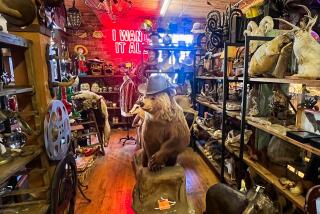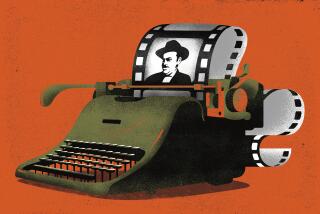‘Citizen Kane’ gets inside the castle
When the film “Citizen Kane” came out in 1941, William Randolph Hearst gave it an unequivocal two thumbs down.
The press lord kept ads for the film out of his many newspapers. Just before its release, one of his allies in Hollywood tried to buy the footage in order to burn it. Another approached FBI chief J. Edgar Hoover, who launched a decade-long investigation of Orson Welles, the film’s 26-year-old director, producer, co-writer and star.
But rosebuds bloom in unlikely places. Seventy-one years after Hearst’s effort to derail it, “Citizen Kane” will be shown at Hearst Castle’s visitors center, with the blessings of the Hearst family.
The March 9 screening on the five-story-tall screen at the Hearst Castle Theater is part of the San Luis Obispo International Film Festival.
Wendy Eidson, the festival’s director, said the film probably has never been seen on Hearst’s sprawling estate. Since 1958, the opulent landmark, which Hearst called “La Cuesta Encantada” (The Enchanted Hill), has been open to the public as a state park.
“I tossed out the idea of screening ‘Citizen Kane’ there as a joke, and they didn’t laugh,” Eidson said. “I was sort of floored.”
Steve Hearst, the mogul’s great-grandson, said the event will present the film as a work of fiction rather than as a documentary about the life of the patriarch known to family members as W.R.
“It’s a great opportunity to draw a clear distinction between W.R. and Orson Welles, between the medieval, gloomy-looking castle shown in ‘Citizen Kane’ and the light, beautiful, architecturally superior reality,” he said.
“Citizen Kane” is the unflattering portrait of a character resembling Hearst, a sensationalistic newspaper tycoon with political ambitions, a young mistress in show business, a jaw-dropping mansion and an insatiable zeal for collecting art.
The parallels between Hearst and Charles Foster Kane are obvious — but so, too, are the differences, said Steve Hearst, who manages the family’s ranches and other business interests.
“The character Orson Welles depicted was quite a bit more flamboyant and outgoing than W.R. was,” he said. “He wasn’t the kind of guy who would be dancing in the editorial room with his staffers.”
Another big difference was in the film’s portrayal of Kane’s love interest, a booze-soaked singer forced by Kane into a disastrous operatic career. Hearst’s real-life mistress, Marion Davies, was a talented comic actress later described by Welles as “an extraordinary woman — nothing like the character.”
By all accounts, Hearst was angry over her portrayal. Decades later, Welles agreed: “I always thought he was right to be upset about that,” he said in a 1969 interview with director Peter Bogdanovich.
In the film, Charles Foster Kane dies alone in his castle, a pathetic old man. His final word is the enigmatic “Rosebud” — the name, as it turned out, of the sled Kane had kept from his childhood.
When Hearst died in 1951, he was surrounded by family at the Beverly Hills mansion he shared with Davies.
“His last words went unrecorded,” said film scholar James Naremore.
Though Hearst knew enough about “Citizen Kane” to dislike it immensely, he never actually saw the film, according to Davies and others.
Welles even liked to tell a story about the tycoon declining a personal invitation to see it. In the 1969 interview, he said he bumped into Hearst in an elevator at the Fairmont Hotel the night the film opened in San Francisco.
“He and my father had been chums, so I introduced myself and asked if he’d like to come to the opening of the picture,” Welles recalled.
The reception was chilly.
“He didn’t answer,” said Welles, who, ever the showman, took full advantage of the moment:
“As he was getting off at his floor, I said, “Charles Foster Kane would have accepted.’ ”
More to Read
Start your day right
Sign up for Essential California for news, features and recommendations from the L.A. Times and beyond in your inbox six days a week.
You may occasionally receive promotional content from the Los Angeles Times.







